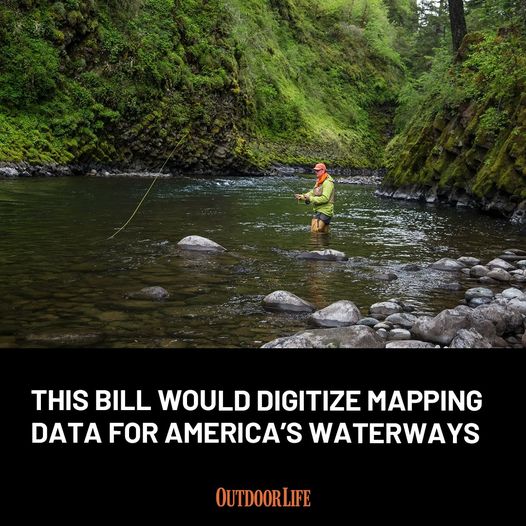A bill that would standardize, consolidate, and make publicly available the vast trove of maps and data related to recreating on America’s federal waterways was heard in a House subcommittee last week and could come to a full floor vote early next year.
The bipartisan Modernizing Access to Our Public Waters Act, or MAPWaters Act, was considered by the House Natural Resources Subcommittee on Water, Wildfire, and Fisheries. It’s a companion to last year’s MAPLand Act, which digitized and made accessible mapping data related to federal lands. The MAPLand Act passed Congress last March and is currently being implemented by federal agencies.
Similarly, the MAPWaters legislation would provide funds and direction to agencies responsible for managing federal waters. Specifically, it would require the secretaries of Interior and Agriculture to develop interagency standards for data collection and dissemination related to federal waterways, usage, and fishing restrictions within 30 days of enactment. And those agencies would have four years to publish online Geographical Information System data on federal waterways, public access, and fishing restrictions.
Testimony in support of the act indicated it would resolve “blind spots” in public information regarding water access and watercraft and fishing regulations. And it would allow commercial mapping entities such as onX, HuntStand, and GOHUNT to include accessible waterways in digital maps that currently show terrestrial land ownership and access.
“The MAPWaters Act will make spatial information on fishing and boating regulations more accessible, ensuring anglers can stay up to date with changing rules and restrictions,” says Mike Leonard, vice president of government affairs at the American Sportfishing Association. “By standardizing and digitizing information on federal waterways, MAPWaters will provide improved information on fishing piers, boat ramps, and access points.”
The bill was introduced by Rep. Blake Moore (R-UT), and co-sponsored by Jimmy Panetta (D-CA), Russ Fulcher (R-ID), and Debbie Dingell (D-MI). Moore says the impetus for the legislation is to create a key to unlock layers of existing waterway data that is kept by agencies but not shared with the public either because it’s in a format that’s difficult to share digitally or because agencies haven’t historically released cartographic and bathymetric information to the public.
“In my home state of Utah, there are over 2,000 miles of federal waterways,” adds Moore. “I want to make sure that people have the information they need to be safe, knowledgeable, and responsible, whether you’re a commercial river guide or a weekend angler. It’s my sense that if people have the right information and access to mapping and other tools, they’ll take better care of the land and waters, and be more responsible stewards of our shared resource.”
Moore notes that his legislation has a small fiscal note, but he says that the benefits to a multi-billion-dollar outdoor recreation industry will more than make up the cost of administering the bill’s requirements.
Read Next: The Best Fly Fishing Books of 2023
“This is an industry that brings in an enormous amount of revenue, and positive tax revenue,” says Moore. “This is a small expense to help support an industry that has shown itself to be recession- and pandemic-proof. If there is any nominal cost to administer this legislation, the benefits clearly outweigh the costs.”
After the bill’s positive reception in the House Natural Resources Committee, the legislation is expected to receive a fairly swift floor vote.
“It seems like an open road ahead,” says Moore. “Or, open waters ahead, I guess you could say.”
